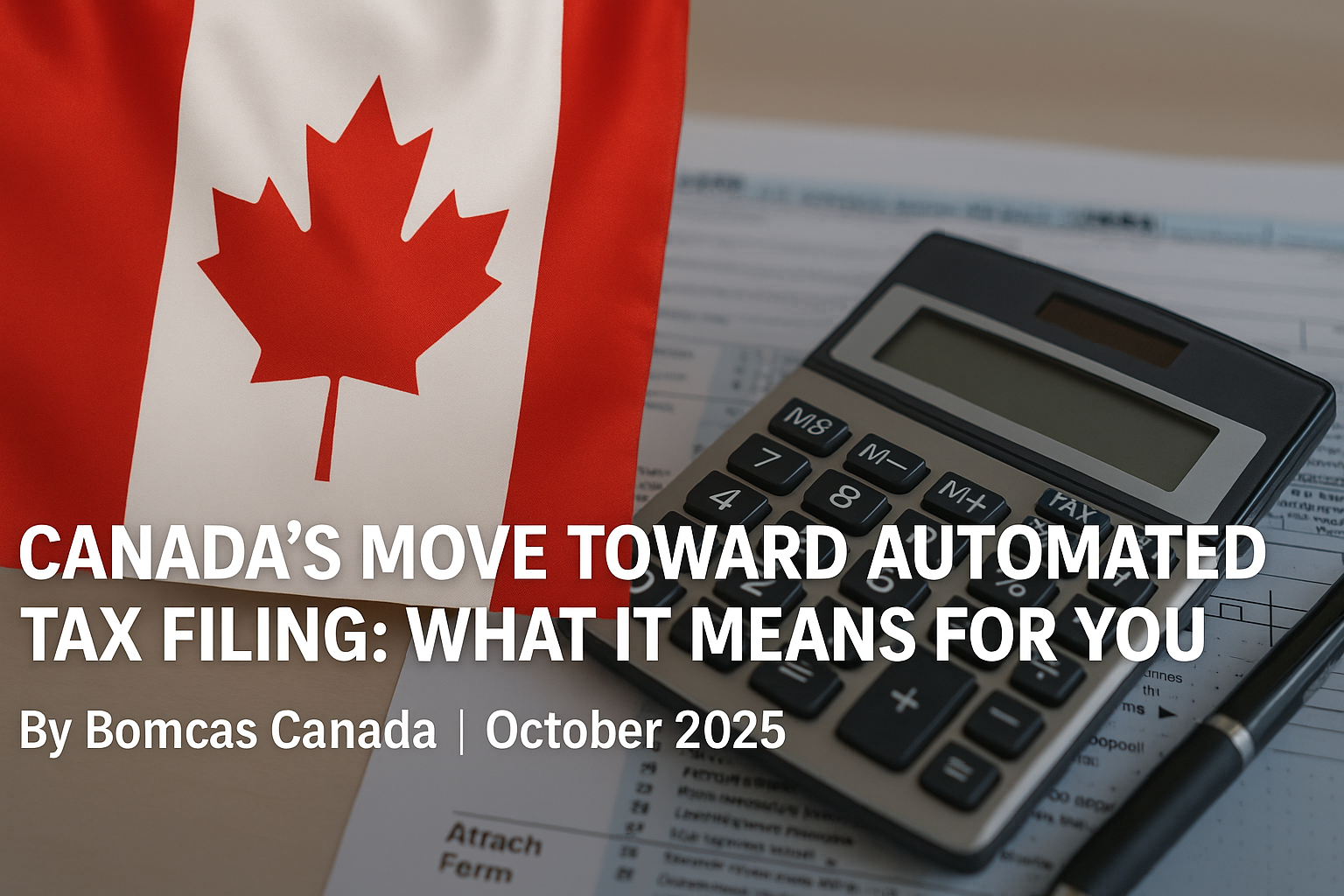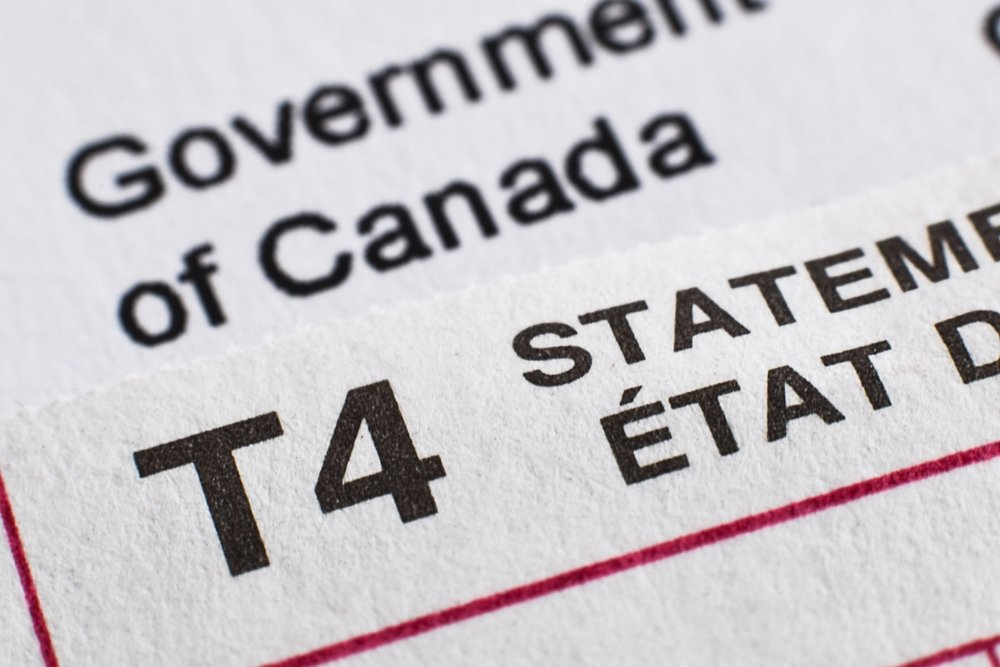Property tax in Edmonton has become a hot topic as the city grapples with significant changes for 2024. The recent announcement of an 8.9% tax hike has sparked discussions among homeowners and businesses alike, raising questions about the factors driving this increase and its impact on the community. This shift in the tax landscape has a profound influence on Edmonton’s residents, affecting everything from household budgets to the funding of essential city services.
To shed light on this complex issue, this article delves into the intricacies of Edmonton’s 2024 property tax rates. It breaks down the components of the tax increase, explores its effects on different types of properties, and compares Edmonton’s rates to those of other Alberta municipalities. Additionally, it explains how property taxes are calculated, outlines payment options and deadlines, and provides insights to help residents navigate these changes effectively. By examining these key aspects, readers will gain a comprehensive understanding of the property tax situation in Edmonton and its implications for the coming year.

Overview of Edmonton’s 2024 Property Tax Rates
The City of Edmonton has announced a significant change in property tax rates for 2024, with an 8.9% increase set to impact homeowners and businesses alike. This adjustment has a substantial influence on the city’s financial landscape and the services it provides to residents. To understand the implications of this change, it’s essential to break down the tax rates for different property types.
Residential/Farmland Rate
For residential properties and farmland, the 2024 municipal tax rate has been set at 0.0076648. This rate applies to single-family homes, condominiums, townhouses, and properties with three or fewer dwelling units. Farmland properties, which include land used for farming operations, are also subject to this rate. For a property valued at CAD 694,000.08, this translates to an increase of approximately CAD 36.09 in municipal taxes compared to the previous year.
It’s important to note that the total property tax amount consists of both municipal and provincial components. Municipal property taxes, which are set by the City of Edmonton, account for about 70% of the total property tax bill. The remaining 30% is allocated to provincial education property taxes, as determined by the Government of Alberta.
Other Residential (Multi-Unit) Rate
The “Other Residential” category, which includes properties with four or more dwelling units on one legal title, has a slightly higher tax rate of 0.0085846 for 2024. This category encompasses apartment buildings, fourplexes, lowrises, highrises, and certain townhouses and row houses.
Interestingly, the City Council has recently made a significant decision regarding this tax class. In a 7-6 vote, they agreed to phase out the “other residential” tax subclass over five years, starting in 2024. This subclass previously charged a 15% higher tax rate to landlords owning rental buildings with four or more units. The change aims to create a more equitable tax structure and potentially incentivize the construction of more multi-unit rental homes in Edmonton.
Non-Residential Rate
Non-residential properties in Edmonton face the highest tax rate at 0.0226627 for 2024. This category includes commercial and industrial properties such as retail spaces, offices, shopping centers, industrial condos, and warehouses. It also covers various types of land, including agricultural, development, and dual-use commercial and industrial properties.
To put this rate into perspective, a non-residential property valued at CAD 1.39 million will see an increase of approximately CAD 205.42 in taxes for 2024. Despite this increase, it’s worth noting that Edmonton’s non-residential tax rate is significantly higher compared to neighboring municipalities. For instance, Stony Plain’s 2024 non-residential tax rate is 0.0090930, which is less than half of Edmonton’s rate.
These tax rates play a crucial role in funding various municipal services, including snow clearing, road and bridge maintenance, parks and trail improvements, drainage infrastructure, and animal control. The revenue generated from property taxes is essential for the city to provide and maintain these services for its residents.
As property owners review their assessment notices, which are typically distributed in early January, they have the opportunity to understand their property’s assessed value and plan for their tax payments. It’s crucial for property owners to be aware of these rates and how they apply to their specific property type, as it directly impacts their financial obligations to the city.
Factors Influencing the 2024 Tax Increase
The City of Edmonton faces significant challenges in balancing its budget for 2024, leading to an 8.9% increase in property tax rates. This substantial hike has a profound impact on homeowners and businesses alike. To understand the reasons behind this increase, it’s crucial to examine the key factors influencing the city’s financial decisions.
Inflation
One of the primary drivers of the tax increase is the rising cost of goods and services due to inflation. The city’s expenses for essential services, such as fuel and fleet maintenance, have increased significantly. Without additional funding to cover these inflationary costs, Edmonton would face slower snow and ice clearing, delayed spring sweeping, and reduced bus service efficiency. These potential service reductions highlight the necessity of adjusting the tax rate to maintain the quality of city services.
Revenue Shortfalls
Edmonton has experienced notable revenue shortfalls, which have contributed to the need for a tax increase. The city’s share of non-residential properties in the metropolitan region has declined from 72% in 2008 to 60% in 2022. This shift has resulted in a smaller industrial tax base for Edmonton compared to surrounding municipalities. The city’s tax base now consists of 78% residential and 22% non-residential properties, while the region’s other municipalities have a more balanced 60% residential and 40% non-residential split.
This imbalance has a significant impact on tax revenue, as industrial and commercial properties typically generate more tax income than residential properties. Edmonton’s non-residential property tax rate is more than twice as high as the average of surrounding municipalities, which has led to a loss of competitiveness in attracting industrial development. The city is working on an industrial investment action plan to address these challenges and improve its economic position.
New City Initiatives
The 2024 tax increase also accounts for funding new city initiatives and maintaining existing programs and services. Edmonton’s budget aims to support 70 City programs and services, ranging from emergency services and parks to roads, bridges, transit, and social supports. These initiatives are essential for maintaining and improving the quality of life for Edmonton residents.
However, the city faces a significant challenge in balancing new initiatives with budget constraints. For the 2025 budget, Edmonton is already projecting a budget gap of CAD 122.14 million. This shortfall could potentially lead to an even higher property tax increase of up to 13% without intervention. The city administration has acknowledged that finding CAD 83.28 million per year in savings or cuts without affecting core services is “almost impossible.”
To address these challenges, the City of Edmonton is exploring various strategies. These include collaborating with regional partners, creating more efficient administrative processes, and establishing a shovel-ready land supply for industrial development. The city is also considering reassessing its role as a service provider in certain areas and looking for opportunities to improve efficiency.
As Edmonton grapples with these financial pressures, residents have expressed concerns about the impact of rising property taxes on their already stretched budgets. Some have indicated that they may consider moving to more affordable communities outside the city if housing costs continue to rise. In response, city officials are working to make evidence-informed, data-driven decisions to balance the need for essential services with the financial burden on taxpayers.
The 2024 property tax increase in Edmonton reflects the complex interplay of inflation, revenue challenges, and the need to fund vital city initiatives. As the city continues to navigate these financial pressures, finding a balance between maintaining services and managing the tax burden on residents remains a top priority for Edmonton’s leadership.
Breaking Down the 8.9% Tax Hike
The 8.9% property tax increase in Edmonton for 2024 has a significant impact on homeowners and businesses. This hike, the highest in more than a decade, is a result of various factors and is divided into different components. To understand the full picture, it’s essential to break down the tax increase into its constituent parts.
Municipal Portion
The municipal portion of the property tax in Edmonton accounts for approximately 70% of the total property tax amount. This component is set by the City of Edmonton and has a substantial influence on the overall tax increase. For 2024, the municipal tax rate has been calculated based on two primary factors: the City Budget and the total assessed value of all properties in Edmonton.
The City Budget determines the amount required to continue offering municipal programs and services. These services include emergency response, park maintenance, road and bridge upkeep, public transit, and various social supports. The costs of these services are distributed among all Edmonton properties using a formula that divides the budget by the total assessed value of all properties to determine the municipal tax rate.
Of the 8.9% total increase, about 5.1% is allocated to maintaining existing city services at current levels. This portion of the increase is necessary to address rising costs due to inflation, higher energy expenses, increased labor costs, and elevated Workers’ Compensation Board insurance premiums.
The remaining portion of the municipal tax increase is directed towards new initiatives and improvements in city services. These include hiring more police officers and transit peace officers, investing in housing, taking action on climate change, and enhancing snow and ice removal services.
Education Portion
The education portion of the property tax in Edmonton typically accounts for about 30% of the total property tax amount. This component is set by the Government of Alberta and collected by the City of Edmonton on behalf of the provincial government. The education property tax provides a stable and sustainable source of revenue for Alberta’s education system, supporting public and separate school students from kindergarten to grade 12.
Each year, the Alberta government determines the total amount of revenue needed for education purposes across the province and bills each municipality for its share of the education property tax requirement. The City of Edmonton then calculates the education property tax rate by dividing this requisition by the total assessed value of all properties in the city.
For 2024, the exact change in the education portion of the property tax has not been announced yet. The Government of Alberta typically reveals this information in April. However, it’s important to note that changes in this portion can have a significant impact on the overall tax increase experienced by property owners.
Other Levies
In addition to the municipal and education portions, some Edmonton property owners may face additional levies that contribute to the overall tax increase. One such levy is the local improvement charge, which affects about 25% of all Edmonton property owners.
Local improvement charges fund projects that are considered more beneficial to a specific property owner or local area than to the city as a whole. These may include localized alley reconstruction, installation of alley lighting, sidewalk reconstruction, decorative street lighting upgrades, and curb crossing installation. These charges are included in the annual tax notice and can be paid either in annual installments or as a lump sum.
Another factor to consider is the Community Revitalization Levy (CRL) for properties located in designated CRL areas. While owning property in a CRL area does not change the total amount collected in municipal taxes or provincial education property taxes, it does affect how a portion of the tax revenue is allocated. In CRL areas, a part of the property tax revenue generated by increased property values is used to fund local development projects and infrastructure improvements.
Understanding these components of the property tax increase helps Edmonton residents comprehend how their tax dollars are being allocated and the reasons behind the significant hike in 2024. As the city grapples with financial pressures and the need to maintain and improve services, property owners can expect to see the impact of these changes reflected in their tax bills.
Impact on Homeowners
The 8.9% property tax increase in Edmonton for 2024 has a substantial effect on homeowners across the city. This hike, which is the highest in over a decade, has a profound influence on household budgets and long-term homeownership costs. To understand the full impact, it’s crucial to examine how this increase translates into actual dollar amounts for different property values.
Average Tax Increase per $100,000 of Assessed Value
The City of Edmonton has provided a breakdown of how the tax increase affects homeowners based on their property’s assessed value. For every $100,000 of assessed home value, homeowners can expect to pay approximately $66.07 more in municipal taxes for 2024 compared to the previous year. This increase is significant, especially for those owning properties with higher assessed values.
To put this into perspective, the average household in Edmonton, with a property assessed at $594,758.07, will pay about $12.45 per day to fund 70 City programs and services. This daily amount translates to an annual increase of approximately $393 for the average homeowner. It’s important to note that this figure represents only the municipal portion of the property tax and does not include the provincial education tax component, which typically accounts for about 30% of the total property tax bill.
Examples for Different Property Values
To illustrate the impact of the tax increase on various property values, let’s consider a few examples:
- For a home assessed at $347,000.04:
- The estimated property tax increase would be around $229.30 for the year.
- This translates to an additional $19.11 per month.
- For a home assessed at $694,000.08:
- The tax increase would be approximately $458.60 for the year.
- This results in an additional $38.22 per month.
- For a higher-value property assessed at $1,000,000:
- The tax increase would be about $660.70 for the year.
- This means an extra $55.06 per month.
These examples demonstrate that the impact of the tax increase is proportional to the assessed value of the property. Homeowners with higher-value properties will see a more substantial increase in their tax bills.
It’s worth noting that property taxes in Edmonton tend to be higher compared to some neighboring municipalities. For instance, a home assessed at $694,000.08 in Edmonton would incur about $7,060.76 in property taxes, which is 57% more than a Calgary homeowner with a home assessed at the same value.
The increased property tax burden has led some residents to express concerns about affordability. Some homeowners have indicated that they may consider moving to more affordable communities outside the city if housing costs continue to rise. This potential shift could have long-term implications for Edmonton’s demographics and urban development.
To help homeowners manage this increase, the City of Edmonton offers a monthly payment plan. If the new tax estimate is significantly higher than current monthly payments, homeowners can contact the city to request an adjustment to their monthly payments, helping to spread the increased cost over the year.
As Edmonton grapples with balancing the need for essential services and infrastructure improvements with the financial impact on residents, homeowners must factor these increased property taxes into their long-term budgeting and financial planning.
Comparison to Other Alberta Municipalities
Edmonton’s property tax increase of 8.9% for 2024 has raised questions about how it compares to other municipalities in Alberta. This comparison provides valuable context for understanding Edmonton’s tax landscape and its position relative to neighboring cities.
Calgary’s Tax Rate
Calgary, Alberta’s largest city, has also approved a significant tax increase for 2024. The Calgary City Council finalized a tax increase of 8.6%, which is slightly lower than Edmonton’s 8.9% hike. This similarity in tax increases between Alberta’s two major cities reflects the shared economic challenges and service demands faced by large urban centers in the province.
Despite the similar percentage increases, it’s important to note that the actual tax rates and amounts can vary significantly between the two cities due to differences in property values and assessment methods. For instance, Calgary’s property tax rate for 2024 is set at 0.65718%, which is lower than Edmonton’s rate of 0.944750%. This means that for a property of equal value, a homeowner in Edmonton would generally pay more in property taxes than their counterpart in Calgary.
To illustrate this difference, consider a home valued at CAD 694,000.08 in both cities. In Edmonton, the property tax for this home would be approximately CAD 7,060.76. In contrast, a Calgary homeowner with a property of the same value would pay significantly less, highlighting the higher tax burden faced by Edmonton residents.
Other Edmonton Metropolitan Region Rates
When comparing Edmonton’s property tax increase to other municipalities in the Edmonton Metropolitan Region, a diverse range of rates becomes apparent. Here’s how some neighboring communities stack up:
- Stony Plain: 8.66% increase
- Beaumont: 6.45% increase
- Strathcona County: 5.87% increase
- St. Albert: 5.3% increase
- Devon: 5.25% increase
- Morinville: 5.21% increase
- City of Leduc: 5.1% increase
- Fort Saskatchewan: 4.2% increase
- Spruce Grove: 4.9% increase
- Parkland County: 2.9% increase
- Leduc County: 1.7% increase
- Sturgeon County: 1.37% increase
These figures demonstrate that Edmonton’s 8.9% increase is at the higher end of the spectrum within the region. Most surrounding municipalities have opted for more modest increases, ranging from 1.37% to 6.45%.
It’s worth noting that Stony Plain, despite having a high percentage increase, is known for maintaining one of the lowest non-residential tax rates in the Edmonton Metropolitan Region. Their 2024 non-residential tax rate is set at 0.0090930, which translates to CAD 1,261.69 per CAD 138,800.02 of assessed value.
A comparison of non-residential tax rates across the region further highlights Edmonton’s position:
- Leduc County: 0.0067000
- Parkland County: 0.0089760
- Stony Plain: 0.0090930
- Leduc: 0.0094819
- Beaumont: 0.0095979
- Edmonton: 0.0226627
Edmonton’s non-residential tax rate of 0.0226627 is significantly higher than its neighbors, more than double the rate of many surrounding municipalities. This disparity in non-residential rates could have implications for business attraction and retention within the city.
These comparisons underscore the complex nature of property tax structures across Alberta municipalities. While Edmonton’s increase is substantial, it reflects the city’s unique challenges in maintaining services and infrastructure while balancing fiscal responsibilities. Property owners in Edmonton should be aware of these regional differences when considering their tax obligations and the value of city services they receive in return.
How Property Taxes are Calculated
The calculation of property tax in Edmonton involves a systematic process that ensures fairness and transparency for all property owners. Understanding this process is crucial for homeowners to comprehend their tax obligations and how they contribute to the city’s services and infrastructure.
Assessment Process
The foundation of property tax calculation in Edmonton begins with the assessment process. Every year, the City’s property assessors capture the market conditions of Edmonton’s real estate market as of July 1. They review and analyze data from various sources to establish the most probable value a property would have sold for on the open market.
The current property assessment notice indicates the City’s estimate of a property’s market value as of July 1 of the previous year, adjusted for any changes in physical condition recorded by December 31. This annual assessment is mandated by provincial legislation to ensure that property values are up-to-date and reflect current market conditions.
The assessment process uses similar factors that real estate agents and appraisers consider when pricing a home for sale. These may include location, size, age, and condition of the property. It’s important to note that increases in assessed values do not automatically mean tax increases. The relationship between assessment and taxes depends on how a property’s value changes compared to the average change across the city.
Tax Rate Application
Once the assessment process is complete, the City applies tax rates to determine the amount of property tax each owner must pay. The calculation involves two main components: municipal property taxes and education property taxes.
Municipal property taxes, which account for approximately 70% of the total property tax amount, are calculated based on two factors:
- The City Budget: This determines the amount required to continue offering municipal programs and services.
- The total assessed value of all properties in Edmonton.
The municipal tax rate is determined by dividing the budget by the total assessed value of all properties. This rate is then applied to individual property values to calculate each owner’s share of municipal property taxes.
For education property taxes, which make up about 30% of the total tax bill, the City calculates the rate by dividing the education property tax requisition (set by the Government of Alberta) by the total assessed value of all properties in Edmonton.
The final property tax amount for each homeowner is calculated by multiplying their property’s assessed value by the combined municipal and education tax rates.
It’s crucial to understand that changes in overall property values do not affect the total amount the City requires for its budget. If a property’s assessed value changes more or less than the average change in Edmonton, the tax increase for that property will be more or less than the average tax increase.
By understanding this calculation process, Edmonton property owners can better anticipate their tax obligations and appreciate how their contributions support essential city services and education funding.
Payment Options and Deadlines
The City of Edmonton offers various options for property owners to pay their taxes, ensuring flexibility and convenience. Understanding these options and adhering to the payment deadlines is crucial for avoiding late penalties and maintaining a good standing with the city.
Payment Plan Options
One of the most popular methods for managing property tax payments in Edmonton is the Property Tax Monthly Payment Plan. This plan allows property owners to spread their tax payments over the year through pre-authorized automatic bank withdrawals. By enrolling in this plan, you can avoid the stress of a single large annual payment and ensure your taxes are paid in full each year without incurring late-payment penalties.
The monthly payment plan works as follows:
- For the first six months of the year, your monthly installment is based on 1/12 of the previous year’s tax amount.
- The installment amount is adjusted for the last six months based on the new annual tax amount.
- Payments are withdrawn directly from your bank account on the first business day of each month.
If you join the plan during the tax year, you’ll need to make up any “missed payments” from previous months. For example, if you start automatic withdrawals on May 1, you’ll need to cover the payments for January through April. To avoid paying a one-time administration fee of 2% of the initial payment amount, it’s recommended to join by the end of October for the upcoming tax year.
For those who prefer not to use the monthly payment plan, other options include:
- Adding property taxes to mortgage payments (check with your mortgage lender for this option).
- Paying through online banking or in-person at financial institutions.
- Mailing a cheque to the City of Edmonton.
It’s important to note that the City does not accept credit card payments directly for property taxes.
Due Dates and Penalties
The deadline for payment of property taxes in Edmonton is June 30 each year. To avoid late-payment penalties, it’s crucial to ensure that your payment is processed before this deadline. Here’s what you need to know about due dates and penalties:
- If you’re not enrolled in the monthly payment plan and the City doesn’t receive full payment by June 30, you’ll be subject to late-payment penalties.
- A 5% penalty is applied to any outstanding balance of current year property taxes on July 1, September 1, and November 1, for a total annual rate of 15%.
- For prior years’ property taxes, a 1.25% penalty per month is applied to any outstanding balance on the first business day of each month, totaling an annual rate of 15%.
- Additional charges added to your account are also subject to a 1.25% monthly penalty on any outstanding balance.
To avoid these penalties, consider the following:
- Allow ample time for mailed payments to arrive before the deadline. The envelope must be postmarked by Canada Post by the due date to avoid penalties.
- Be aware of your financial institution’s policy on the effective date and time of online payments.
- If paying through a mortgage lender, note that it can take up to 15 business days for the payment to show on your tax account.
By understanding these payment options and deadlines, Edmonton property owners can effectively manage their tax obligations and avoid unnecessary penalties.
Conclusion
The property tax landscape in Edmonton for 2024 has a significant influence on homeowners and businesses alike. The 8.9% increase reflects the city’s efforts to balance essential services with financial pressures, impacting everything from household budgets to funding for municipal programs. This shift in the tax structure underscores the complex interplay of factors such as inflation, revenue challenges, and the need to invest in new initiatives. As residents grapple with these changes, it’s crucial to understand the calculation process, payment options, and deadlines to manage their tax obligations effectively.
Looking ahead, Edmonton faces the challenge of maintaining its competitiveness while ensuring the delivery of quality services to its residents. The comparison with other Alberta municipalities highlights the need for ongoing discussions about tax structures and their impact on the city’s growth and development. For those seeking guidance on navigating these financial changes, it’s worth noting that for all your Accounting and Personal and Corporate Tax Preparation and Filing, BOMCAS Canada is available to assist today. As Edmonton continues to evolve, open dialog between city officials and residents will be key to shaping a sustainable and thriving community for all.










 View Our Location
View Our Location





 181 Meadowview Bay, Sherwood Park, AB T8H 1P7, Canada (Online Clients Only)
181 Meadowview Bay, Sherwood Park, AB T8H 1P7, Canada (Online Clients Only)